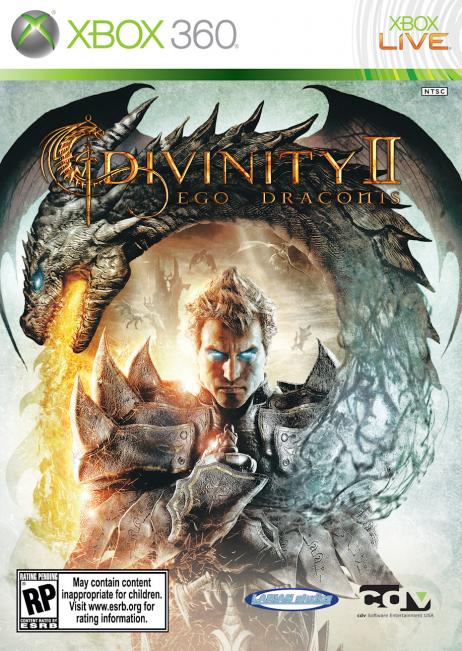Divinity II: Ego Draconis Review
-
Category: ReviewsHits: 21749

Article Index
Page 1 of 2
IntroductionDivinity II: Ego Draconis is the third major release from Larian Studios, following in the footsteps of Divine Divinity (2002) and Beyond Divinity (2004). The game picks up a few years after the events in Beyond Divinity. Damian is camped out in Rivellon planning untold nefarious deeds, but the Dragon Knights, once the protectors of the land, have fallen out of favor, to the point where a group called the Dragon Slayers has been formed, to hunt them down and exterminate them.
As the game opens up, you take control of a new recruit into the Dragon Slayers, but then your initiation is interrupted, and your first encounter with a Dragon Knight goes awry, and you end up with the powers of both groups. That means, among other things, that you can read minds, talk to the dead, and turn into a dragon. With that much power bundled up into a single character, you decide that you should take on Damian, and that's what the bulk of the 30-40 hour campaign covers.
Character Development
Larian uses roughly the same character development system in Ego Draconis that they used in Divine Divinity and Beyond Divinity. That is, each time you gain a level you also gain some points to spend on attributes, plus a point to spend on a skill. Attributes include strength, dexterity, vitality, intelligence and spirit, which all do about what you'd expect, but nicely all of the attributes are important for all characters, and so you have to think more about where you want to spend your points. For example, intelligence increases your magical damage (including magical damage from weapons), and it also increases your magical resistance, and so everybody needs it.
The skills in Ego Draconis include spells (like fireball and curse), melee abilities (like battle rage and whirlwind), ranged abilities (like explosive arrows and ranger surprise), and some general purpose abilities (like lockpick and wisdom). These skills don't use any sort of branching tree of prerequisites; they only have level requirements, and so you're free to pick and choose the ones that you like best. That being said, unlike other games that allow you to learn everything, in Ego Draconis you're fairly limited in the number of skill points you receive, and so most players probably stick to the core abilities of the type of character they're playing. I played a melee character in the game (with some points in healing and summoning), and that worked out pretty well.
Because you can change into a dragon in the game, there are also some special dragon skills that you can learn (such as fire breath and dragon shield). There aren't nearly as many dragon skills as there are regular skills, but then you're not given any free dragon skill points when you level up, and so dragon skills are more difficult to learn. To improve your dragon skills, you have to find special dragon skill books, which are hidden throughout the world, and which are just one of the numerous good rewards that you can receive if you're thorough about exploring every nook and cranny of the game maps.
Game Mechanics
Unlike Larian's first two games, which used 2D graphics and an isometric view, Ego Draconis uses a 3D engine and an over-the-shoulder camera. As you might expect with such a set-up, you control your character using the WASD keys to move, the spacebar to jump, the mouse to direct the camera, and the mouse buttons to attack and interact with objects (or at least that's how it works on the PC, which is the version of the game I played; the Xbox no doubt uses standard Xbox controls). You can also assign up to eight objects or skills to hotkeys, and you can can configure the keys in any way you like, and so the interface is versatile and functional.
Unfortunately, the combat mechanics aren't nearly as effective, which is a problem because the game is roughly half combat. You can't attack and move at the same time (making it more difficult than it should be to finish off retreating enemies), the visuals don't always agree with what the game thinks is happening (for example, you might see your weapon hit an enemy, but it's considered a "miss" because the game doesn't think you're close enough to connect), you're always forced to sheathe your weapon for conversations and cut scenes, giving enemies in important battles a few easy shots at you, and you're frequently teleported after killing an enemy, sometimes nearby but sometimes far away, which is just bizarre.


